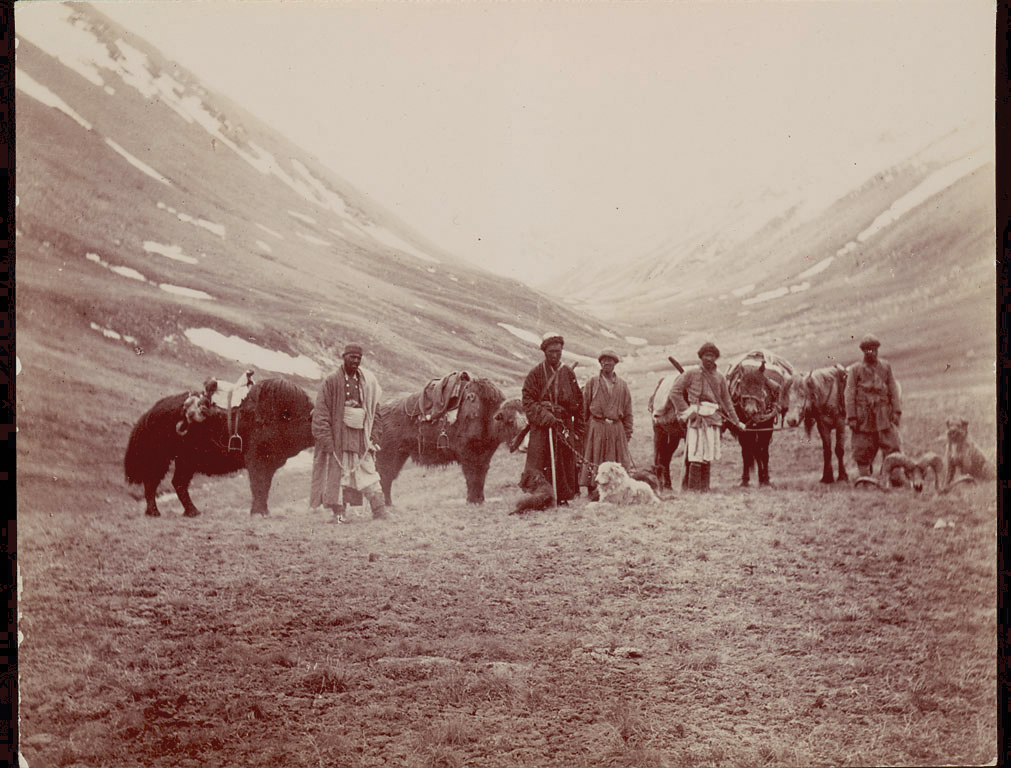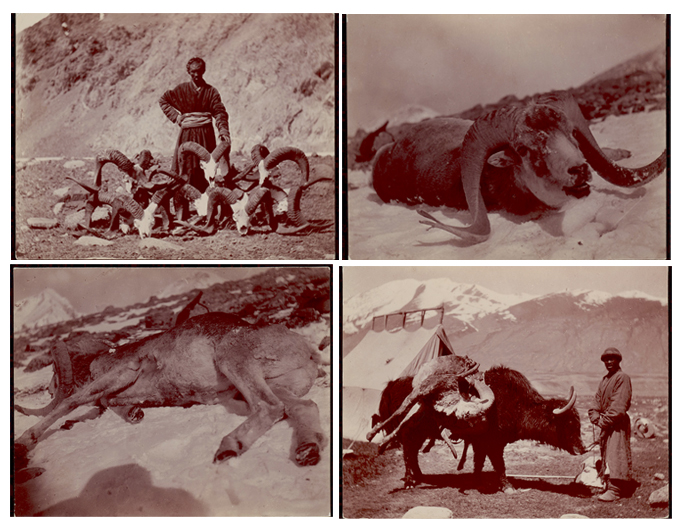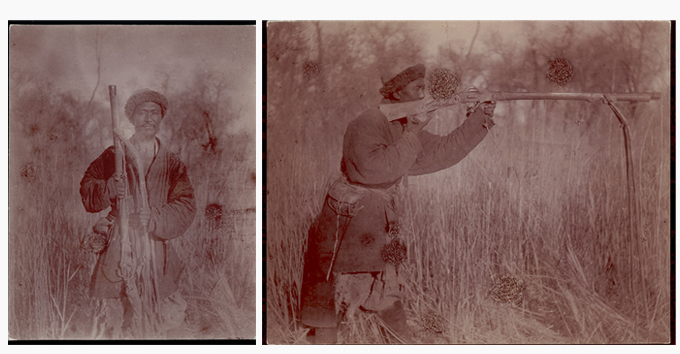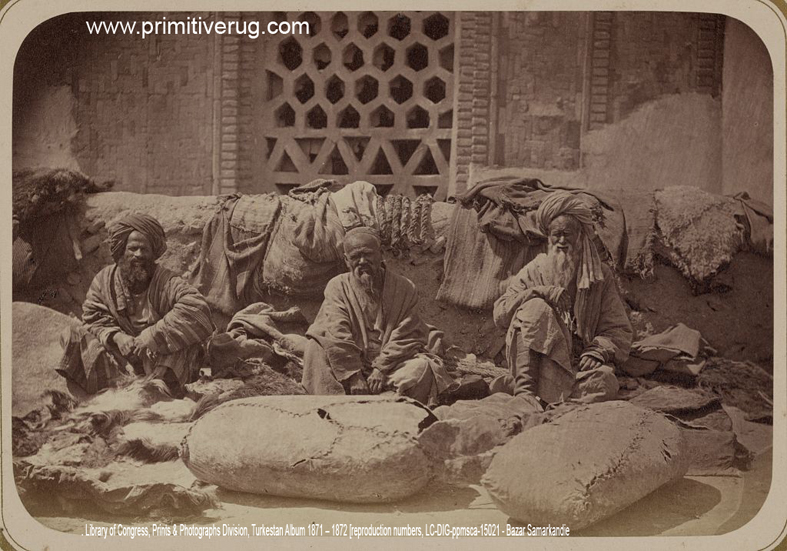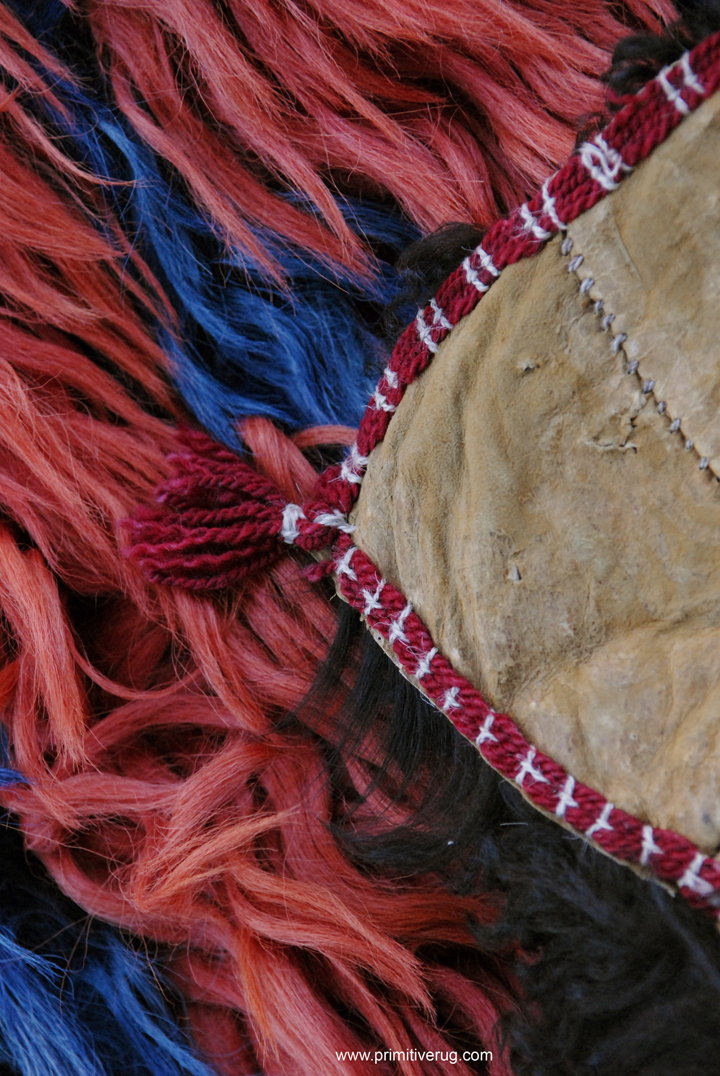Primitive Skins from the Stone Age Part 5 Bearskin Postak
Robert Cobcroft
Bearskin Postak
Group in costume with dogs, yaks, horse and mountain sheep head, returning from hunt for wounded mountain sheep.
Himalayan brown bears are found in the Afghan Pamirs, usually seen running helter skelter across the jagged mountains and valleys displaying shaggy coats of a reddish-brown or sandy colour. This Postak is in the collection of Karl-Heinz Breuss and was published in 2000 und 1e Nacht1 It has been suggested that the central skin panel could be the hide of an unlucky bear. The colour certainly matches that of the Himalayan brown bear.
These shaggy fur rugs would normally consist of Karakol sheep skin, Yak skin or Mountain Goat. The Kirghiz were not noted for hunting bears. M. Nazif Shaharani wrote, "Hunting, trapping, and collecting are very marginal activities among the Kirghiz. The Kirghiz, I was told, relied more heavily on hunting for their food in the past than they do now. The Kirghiz never go out solely for the purpose of hunting animals regarded by Islamic doctrine as unfit for human consumptoin-wolf, fox, bear or marmot. They shoot wolves and foxes if they run into them."2 The Karl-Heinz Breuss Postak is most certainly one of the rare group of late 19th Century examples. It's plausible that a Himalayan brown bear ended up in the sights of the hunters rifle, perhaps the result of an encounter that neither man nor bear had wished for. The Wakhi and Kirghiz did hunt mountain goats for their hides, the Wakhi were noted for making long skin coats of mountain goat.3 The attached images all shot in the 19th Century indicate that hunting in the Wakhan corridor was common practice. The Marco Polo sheep has been hunted in the area for centuries.
From the Kirghiz legend of Jalyil "Over mountain and valley he hunts the Marco Polo sheep, the one of a kind" 4
Inevitable change impacted on the traditional ways of the Kirghiz. This rare group of pieced-skin Postak remain. Bear or no bear, the Karl-Heinz Breuss example is a tangible link to a primitive past that pre-dates the woven carpet.
1 Gerhard M. Dienes, Helmut Reinisch 2000 und 1e Nacht. Teppiche und textilen aus Privatsammlungen - Stadt Museum Graz 2001 , no. 161 pg 227
2 Shaharani M. Nazif The Kirghiz and Wakhi of Afghanistan Adaptation to Closed Frontiers and War University of Washington Press 2002 108
3 Dor, R. & Neumann, C. Die Kirghisen des Afghanischen Pamir Akademische Druck- u. Verlanganstalt, Graz 1978 37
4 Dor, R. & Neumann, C. Die Kirghisen des Afghanischen Pamir Akademische Druck- u. Verlanganstalt, Graz 1978 99
Image Citations - Hunting party, photographs by David T Hanbury, probably Pamir mountains. DOE Asia: China: Xinjiang (Sinkiang):
National Anthropological Archives, Smithsonian Institution Local Notes: Photo Prior to 1898, NM 32640 04535000, NM 32640 04529500, NM 32640 04532900, NM 32640 04532800, NM 32640 04532700, NM 32640 04535500, National Anthropological Archives, Smithsonian Institution NM 32640 04535600,

